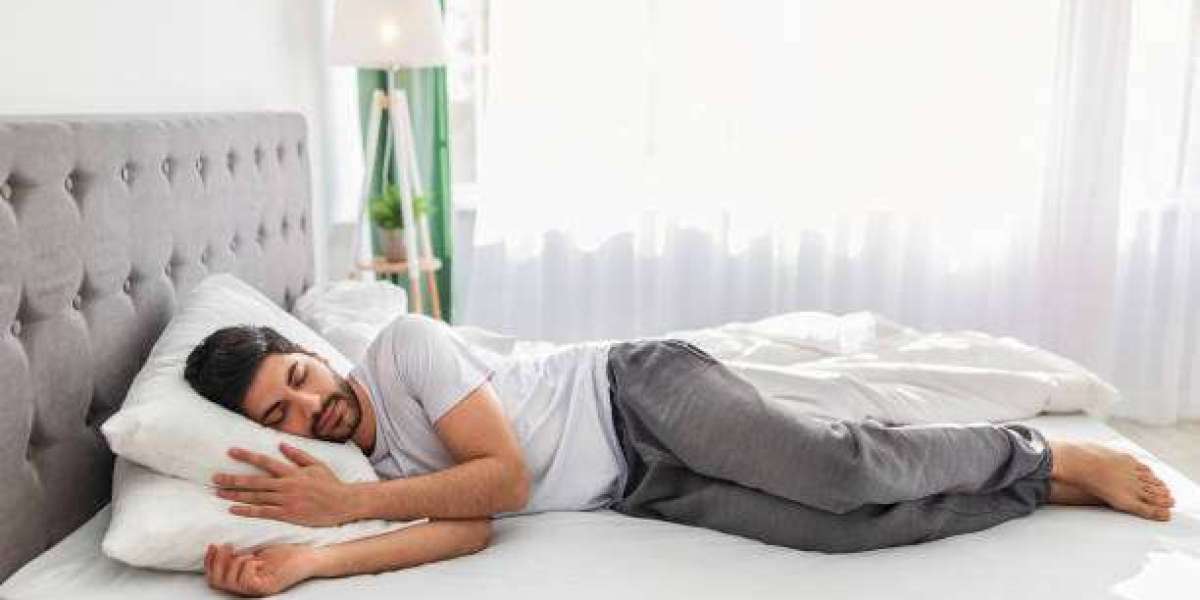How to Choose the Right Mattress for Pain-Free Sleep
Getting a good night’s sleep is essential for maintaining your overall health and well-being. However, if you wake up with backaches, neck stiffness, or joint pain, your mattress might be the culprit. Choosing the right mattress isn’t just about comfort—it’s about supporting your body in a way that promotes restful, pain-free sleep.
In this guide, we’ll help you understand how to choose the right mattress to reduce or eliminate pain and ensure quality rest.
Why Your Mattress Matters
Your spine has a natural curve that needs to be supported properly while you sleep. A good mattress keeps your spine aligned and distributes your weight evenly, helping to relieve pressure points—especially around your shoulders, hips, and lower back. A poor-quality or unsuitable mattress, on the other hand, can lead to poor posture during sleep, causing or aggravating pain.
Common Types of Pain Caused by the Wrong Mattress
Before you start shopping for a new mattress, it helps to understand how a bad mattress might be affecting your body. Common pain areas include:
Lower back pain: Often caused by a sagging or overly soft mattress that doesn’t provide enough lumbar support.
Neck pain: Sometimes due to an uneven sleeping surface or lack of pillow support.
Hip and shoulder pain: Can result from a mattress that is too firm or lacks adequate pressure relief.
Joint pain: Stiff or old mattresses can place extra stress on joints, especially for side sleepers.
Factors to Consider When Choosing a Mattress
1. Sleeping Position
Your preferred sleeping position plays a major role in determining the best type of mattress for your needs.
Back Sleepers: Require medium-firm support that keeps the spine aligned without letting the hips sink too deep.
Side Sleepers: Need a softer surface that cushions the shoulders and hips while maintaining spinal alignment.
Stomach Sleepers: Should look for a firmer mattress to prevent the body from sinking too much, which can strain the neck and lower back.
Combination Sleepers: A medium-firm mattress that balances support and comfort is usually best.
2. Mattress Firmness
Firmness levels are often rated on a scale from 1 (softest) to 10 (firmest). The right firmness depends on your body weight and sleep style:
Soft (3–5): Good for lightweight individuals and side sleepers who need more contouring.
Medium (5–7): A balanced choice for most sleepers, especially back or combination sleepers.
Firm (7–9): Ideal for stomach sleepers and heavier individuals who need extra support.
3. Body Weight
Your weight affects how much pressure you place on a mattress and how much it compresses under you.
Lightweight (under 130 lbs): Softer mattresses may feel firmer, so opt for a plush or medium-soft option.
Average weight (130–230 lbs): Medium-firm mattresses usually offer the right mix of comfort and support.
Heavyweight (over 230 lbs): Firmer mattresses with durable materials are best to prevent sinking and maintain spinal alignment.
Types of Mattresses and Their Benefits
1. Memory Foam
Pros: Excellent pressure relief, body-contouring, motion isolation.
Cons: Can retain heat and may feel too soft for some.
Best For: Side sleepers and people with joint pain or pressure points.
2. Innerspring
Pros: Great support, airflow for cooling, traditional feel.
Cons: May lack contouring and pressure relief.
Best For: Stomach sleepers and people who prefer a firmer, more responsive surface.
3. Hybrid
Pros: Combines memory foam and innerspring benefits, offering both support and cushioning.
Cons: Can be expensive.
Best For: Combination sleepers or couples with different sleep preferences.
4. Latex
Pros: Durable, natural material, responsive, good for hot sleepers.
Cons: Can be pricey and heavy.
Best For: People with allergies, eco-conscious shoppers, or those needing support and bounce.
Signs It’s Time to Replace Your Mattress
Even the best mattress doesn’t last forever. You may need a new one if you notice:
Visible sagging or lumps
Increased aches and pains in the morning
Waking up frequently during the night
Your mattress is over 7–10 years old
You're sleeping better in other places (like a hotel)
Tips for Mattress Shopping
1. Test Before You Buy
If possible, lie down on a mattress in the store for at least 10–15 minutes in your usual sleeping position. Online mattress companies often offer generous trial periods, allowing you to test the mattress at home for up to 100 nights.
2. Check for a Sleep Trial and Warranty
Choose a mattress with a sleep trial period and a warranty of at least 10 years. This ensures you're covered in case it doesn’t work out or defects arise.
3. Don’t Ignore Pillows and Bedding
Even with a great mattress, the wrong pillow or bedding can lead to discomfort. Make sure your pillow supports your head and neck based on your sleeping position.
4. Watch Out for Gimmicks
Mattress marketing often features buzzwords like “orthopedic” or “medically approved,” which aren't always regulated. Focus on what actually suits your needs rather than the label.
Final Thoughts
Pain-free sleep starts with the right foundation—your mattress. Choosing one that aligns with your sleep position, body type, and comfort preferences can dramatically improve your sleep quality and reduce daily discomfort.
Don’t settle for just any bed. Take your time, do your research, and invest in a mattress that helps you wake up feeling refreshed—not sore. Your body will thank you. For more expert guidance on sleep health and personal wellness, visit Venzec.icu and explore a range of resources designed to enhance your well-being.



